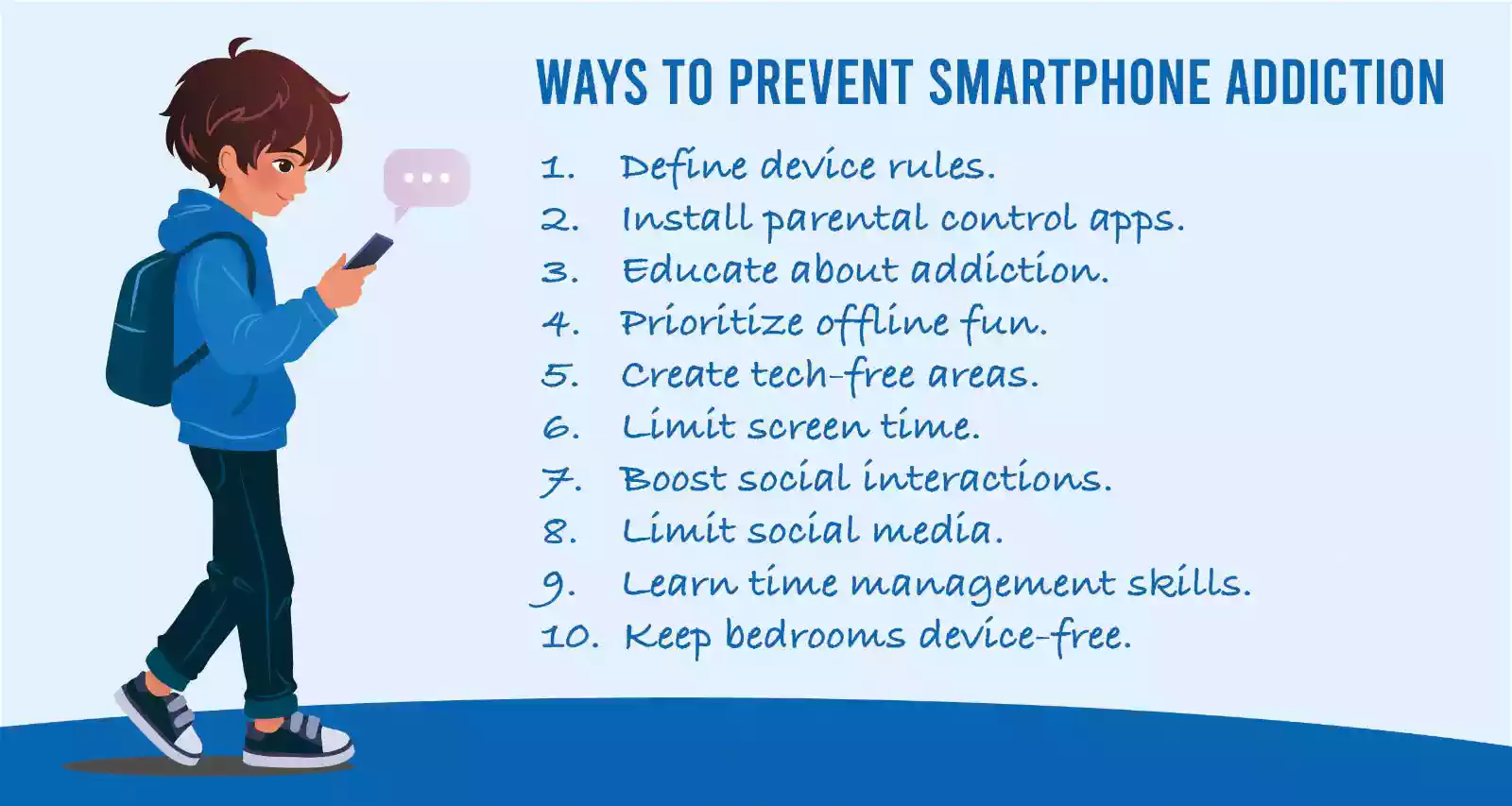
MY KID HAS A SMARTPHONE...NOW WHAT?
A family member who recently lived without internet at home decided to take the plunge and finally get connected. She said, “It’s amazing what I can do now. You are living in isolation without it.” Her excitement was understandable—accessing the online world can open up a wealth of information and opportunities to connect. However, while a smartphone or internet access can offer a sense of connection and temporary relief from isolation, it’s important to emphasize the fact that the time we spend on devices can create a false sense of connection. Instead of fostering true relational bonds, it can increase our feelings of loneliness when used without intention or balance. Research confirms that excessive device use not only impacts cognitive abilities but also the development of crucial social and relational skills.
The Need for True Connection
As humans, one of our most fundamental needs is to form meaningful relationships, and this is by design. We were lovingly made by a good and intensely relational God to live in community with each other. As Psalm 68:6 says, “God sets the lonely in families”. We certainly crave a sense of belonging and purpose that goes far deeper than the temporary satisfaction provided by a screen. Consider this perspective: Once you experience genuine, fulfilling relationships, you might also say, “It’s amazing what I can do now. You are living in isolation without it.”
So, which is more isolating—living without the internet or living without meaningful relationships? We’ve all heard the phrase “feeling alone in a crowd.” But what about feeling alone within your family? Sadly, this has become an all-too-common reality in homes where smartphones and devices dominate the daily dynamic.
When my family first welcomed smartphones into our lives, I was unprepared for how they would subtly but profoundly change our relationships. The invasion of screens brought about a new kind of isolation—one where, despite being physically together, we were emotionally distant. This is not to say smartphones are inherently bad; they’re powerful tools that, when used thoughtfully, can enhance our lives. But without boundaries and mindful habits, they can quickly erode the quality of our relationships, replacing meaningful connections with the illusion of these.
A Source of Information and Entertainment (at the Cost of Development)
Smartphones and other devices have revolutionized how we access information and entertain ourselves. They provide vast knowledge and endless entertainment options. However, this convenience comes at a cost. For children, the increasing reliance on these devices often replaces critical elements of their development, including sleep, focus, family interactions, and the cultivation of meaningful connections essential for mental and emotional well-being.
The average child now receives their first smartphone at just 11.6 years old. While this milestone may bring excitement and a sense of independence, it also introduces significant challenges. Among the most concerning effects are the replacement of sleep, focus, and social interactions—three pillars of healthy childhood development. Sleep, in particular, is essential for a child’s physical growth, brain development, and overall health. When screen time infringes on rest, it negatively impacts learning, memory, and even the body’s ability to recover from minor illnesses. Studies also link heavy smartphone use to impairments in the prefrontal cortex—the part of the brain responsible for problem-solving, impulse control, and planning. These changes can disrupt emotional processing, which is vital for healthy social interactions. The result? Children may struggle to manage emotions, navigate relationships, and engage meaningfully with others.
What Counts as “Heavy Use”?
Pediatricians provide clear guidelines for screen time:
- Ages 2-5: No more than one hour per day, ideally co-viewing with a parent or sibling.
- Ages 5-17: Generally no more than two hours per day outside of homework.
Exceeding these recommendations can have profound consequences on both mental and social development. One of the most alarming impacts of excessive smartphone use is the gradual erosion of social interactions. Families may not immediately notice these changes because they occur subtly over time—then suddenly, new behaviors emerge: irritability, frustration, and difficulty managing anger. The family unit, once bound by shared experiences and meaningful conversations, can become fragmented. This loss of connection hampers the development of social skills during critical periods of growth, replacing real-life interactions with digital distractions.
Just as muscles need exercise to grow, social and emotional skills require practice to develop. Children learn these skills through real-life interactions, not through screens. Dr. Jim Wilder emphasizes the critical needs of children aged 4-12:
- Sorting feelings, imagination, and reality
- Feedback on guesses, attempts, and failures
- Unconditional love
- Learning to do hard things and tame cravings
These tasks are accomplished through connection and guidance from parents, teachers, and peers. For example, playing basketball in a video game is no substitute for the teamwork, communication, and physical coordination learned on a real court.
The Convenience Conundrum
Smartphones offer a comforting convenience: the ability to locate and contact our children instantly. However, this constant connectivity can foster over-dependence on technology for both parents and children. It can be comforting to check in to see our children’s location, contact them on their phones with a question we want answered immediately or pass along an important message. This can bring us peace of mind at that moment, but if a phone is lost, broken, or out of battery, it can create unnecessary anxiety, underscoring how reliant we’ve become on these devices. Children may also feel that they are unable to navigate their world without this constant digital connection, limiting their ability to handle situations independently.
Additionally, constant updates or requests for check-ins can inadvertently place pressure on teens seeking space and independence, straining parent-child relationships.
While smartphones allow us to pinpoint our children’s physical location, there are other places our children have become open to that we may not be able to locate, and that is the open doors to potential risks like cyberbullying, social comparison, and the pressure to be constantly accessible to peers. These challenges can erode self-esteem, create social anxiety, and complicate emotional well-being.
A Disconnection from Real Life Experience
Reflecting on childhood before smartphones, many of us recall waiting for phone calls, engaging in imaginative play, or having long conversations with friends. These experiences nurtured creativity, connection, and independence. I recall the excitement of waiting for a phone call. And I would not sit and stare at the phone or play with the cord until it rang; I was busy being a kid around the house, playing music in my room as I tidied up or flicking through a magazine. I remember sitting with friends and enjoying long conversations filled with laughter and silliness. I remember walking down to the park and sitting on swings as we made up games like who could jump the furthest off the swing or if we could keep the swing at the same speed as our friend next to us, and then, content with the evening of play and exploration, we would walk home as we talked more. When we parted ways, we used that alone-time to think back over the day while trying not to step on cracks on the pavement. In contrast, constant device use diminishes the depth of real-life interactions, replacing the joy of shared experiences with the shallow connections of texts and notifications. Over time, children may lose out on the relational skills necessary for forming meaningful relationships.
The Cost of Over-Demanding Expectations
Over the past 25 years, society has placed growing demands on children to excel academically, athletically, and socially. Studies show that Western cultures use terms like “smart,” “talented,” and “gifted” far more than others, reflecting these high expectations.
At the same time, we’re seeing a rise in anxiety, depression, and social challenges among youth. Excessive screen time exacerbates these issues by undermining the skills children need to cope with the pressures of modern life. As Dr. Gabor Maté notes, “When we see children struggling, our focus shouldn’t be on fixing the child, but on creating the conditions for them to thrive.”(1) To protect our children’s well-being, we must find a balance between the benefits of technology and the irreplaceable value of human connection. This means setting boundaries, fostering real-life interactions, and modelling healthy device use.
By prioritizing relationships and emphasizing the importance of social-emotional learning, we can help our children thrive in a world increasingly dominated by screens.

What Can We Do?
As parents and caregivers, our role is to model and teach our children how to use technology responsibly, ensuring that their devices support rather than replace genuine connections. Here are a few steps to consider:
- Set Boundaries: Establish screen-free zones and times, such as during meals or family gatherings, to encourage face-to-face interaction.
- Teach Mindful Usage: Help your child understand the difference between productive and excessive screen time.
- Foster Real Relationships: Prioritize activities that build connection—family outings, shared hobbies, or simply engaging in meaningful conversations.
- Monitor Content and Time: Keep an eye on what your child is consuming online and how much time they spend on their devices.
- Model Behaviour: Children learn by example. Show them how you balance your own screen time with meaningful interactions.
True connection comes not from the glow of a screen but from the warmth of relationships. As we guide our children in navigating the digital world, let’s not lose sight of what matters most—helping them build a life rooted in meaningful, human connections that reflect the relationship we’re invited to share with the God who loves us.
Setting boundaries around smartphone use can be the healthiest way to promote good habits and ensure their safety. Here are some further suggestions to consider:
- Time limits - Use settings that restrict total daily screen time.
- Downtime - Use settings for the phone to turn off at scheduled times.
- Phone-free times - Establish these times during family meals, bedtime, and study periods.
- App permissions - Decide which apps your child can install and use.
- Parental control apps - These allow monitoring and filtering of websites, apps, and online interactions.
- Personal information protection - Emphasize not sharing personal details like addresses, phone numbers, or school names online.
- Friend lists - Encourage them to only accept friend requests from people they know in real life
- A clear purpose for use - Help kids distinguish between productive (homework) and entertainment usage.
- Responsible behaviour - Emphasize the importance of respectful communication and warn about the permanence of what they post.
- No phone at bedtime - Keep phones out of bedrooms to avoid sleep disruptions and late-night use.
- Phone charging - Designate a family charging area to keep devices out of reach at night.
- Set clear expectations - Let your child know the consequences if they misuse their smartphone and follow through. Consistency is key.
- Model healthy behaviour - Lead by example. Show healthy smartphone habits yourself by limiting your own screen time, especially during family moments.
- Encourage other activities - Encourage your children to participate in sports, hobbies, or family activities, to balance screen time.
- Setting boundaries and having open, ongoing conversations about the benefits and risks of smartphone use can help your kids develop a healthy approach to the use of technology.
- Social media privacy settings - Teach your child about privacy settings and ensure their profiles are private.
-
Age-appropriate social media - Set guidelines for which platforms are allowed.
